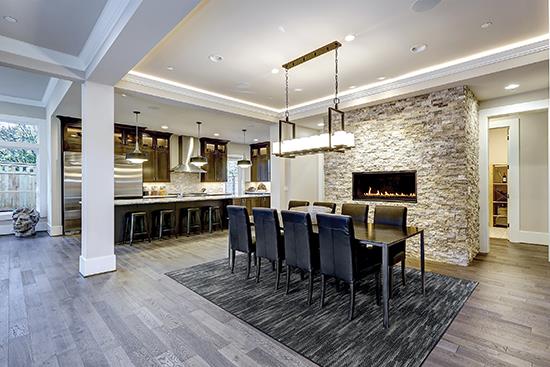Survey 2019: What the Retailers Think - July 2019
By Darius Helm
The flooring retail business never gets easier. If anything, it gets harder at varying rates, but the core problems remain, vying for retailers’ attention with newly emerging challenges. Perhaps the most critical long-term challenge facing independent flooring retailers is the divergence between their interests and the interests of flooring manufacturers.
Independent flooring retailers used to be critical partners with manufacturers. Home centers and big boxes started to shift manufacturers’ focus and also shift the market toward lower price points, and the Internet has accelerated the process. The shift from carpet to longer-lifecycle products will also impact retailers’ fortunes in the near future. As one respondent put it, “Manufacturers keep coming up with products that eliminate future sales.”
In terms of tariffs, there’s a lot of nervousness-“Tariffs continue to disrupt the flow of products,” one survey respondent wrote, and another called them “troubling and a distraction”-but the biggest issues relate to “how tariff increases are handled.” Their issues are with opportunism on the part of manufacturers. One retailer pointed to the heart of the problem: “Greedy U.S. manufacturers are taking advantage of the tariff situation; U.S. manufacturers need to take this opportunity with tariffs to make their products more competitive with imports.”
Retailers were also very vocal about the continuing installer crisis, with one retailer lamenting that “nobody wants to take up a trade. It makes me worry that once all of these old carpet installers retire, there won’t be a workforce to handle that part of our business.” Several retailers voiced a range of strategies, from recruiting high schoolers to encouraging manufacturers to invest in installation training.
The lack of branding is also a continuing disappointment. One knowledgeable retailer noted, “People still ask for a Stainmaster carpet as though Invista manufactured carpet-and those (DuPont) ads haven’t run in 20+ years.” The retailer adds that flooring producers “do not think in quarter centuries but in quarters, and it shows.”
WHO THEY ARE
Independent flooring retailers surveyed for this report are divided into four geographic groups: East, West, South and Midwest. The biggest group is the Midwestern retailers both in terms of geographic dominance and representation in this survey, accounting for nearly 31% of respondents. Western retailers make up another 26%, while retailers from the South make up 25% and the smallest group, centered on the Northeast, account for the remaining 18%.
In terms of annual revenues, this year 12% reported sales of less than $600,000, the same as last year, and 14% reported sales between $600,000 and $1 million, compared to 17% last year. A further 27% reported sales of $1 million to $2 million, compared to 20% last year. Together, 53% of respondents reported sales of $2 million or less compared to 49% last year.
At the other end of the spectrum, 10% reported sales of over $15 million, the same as last year, and 5% cited sales from $10 million to $15 million, compared to 6% last year. And 7% reported sales from $5 million to $10 million, down from 9% last year, and another 25% had sales from $2 million to $5 million, compared to 26% in 2018.
Overall, compared to last year’s results, the retailers in this survey have marginally less total revenues.
When it comes to year-over-year changes in earnings and revenues, average revenues grew 4.44%, while earnings grew at a slower rate, 4.14%. Some of this differential is likely due to lower-end rigid core products like SPC displacing higher priced items.
This year, 17% of retailers reported that their installers are company employees (with the other 83% using independent contractors), retreating from last year’s high of 21%. Regionally, responses ranged from 13% in the Midwest and 14% in the South to 19% in the East and 22% in the West. This has been the pattern for the last few years, with the South and Midwest generally the strongest markets for contracted labor-two years ago, only 5% of retailers in the South reported in-house installers-with the East consistently leaning in the opposite direction.
A similar pattern applies to how salespeople are compensated. This year, 38% of retailers report paying their sales forces straight salaries, with another 42% paying salaries plus commissions and 20% paying straight commissions. Last year, 34% paid straight salaries, 41% paid salaries plus commissions and 25% did straight commissions. And straight commissions were lowest in the East this year at 12% and highest in the South at 30%. In terms of both installers and sales teams, retailers in the East tend to take more responsibility for those who work for them, while in the South, retailers, with their more contractor-oriented business philosophies, tend toward smaller in-house salaried staffs. Retailers in the West generally lean toward the approach of retailers from the East, while the Midwest hews more closely to the South.
Participation in retail groups, at 46%, is about the same as last year, though there are some strong regional differences. For instance, this year 63% of Midwestern retailers report being part of buying groups, compared to 42% in the South, 40% in the East and only 33% in the West. And as in previous surveys, retailers both independent and aligned with groups are generally satisfied; most of those not in groups are not particularly interested in joining one.
For the complete Retailer Survey Results, see the July 2019 issue of Floor Focus Magazine.
Copyright 2019 Floor Focus
